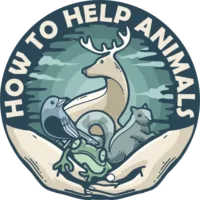
If you live in California and want to help local wildlife to have a better life and at the same time help the environment, this article is for you. I’ll go through the most common animals in California and explain how you can help them through this article.
The most common animals found in California are beavers, black bears, cougars, coyotes, deers, dolphins, hawks, lizards, otters, owls, raccoons, skunks, snakes, squirrels, and whales.
I’ll go through each of these animals and give ways how to help them, and at the same time, be environment-friendly.
How to help beavers in California
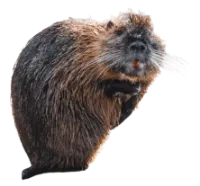
Beaver dams are essential for maintaining and establishing wetlands. Beaver dams provide a habitat for many different sensitive plants and animal species, helping biodiversity tremendously.
Beavers are nature’s engineers and help the felling of trees, building dams, and changing the waterways that both themselves and humans benefit from. Without beavers, the ponds and dams will disintegrate, and many species (both animal and plant) will get lost.
Therefore, it’s essential to keep the beavers happy and not let them suffer.
There are some ways you can help the beavers in California.
Leaving them alone
Beavers and humans can co-exist without walking into each other. By letting the beavers be, you remove stressful encounters for them and let them live in peace.
Plant some trees
As you may know, beavers have a vegetarian diet and eat plant-based materials. Their diet consists of fresh leaves, twigs, stems, and bark. Their favorites include alder, aspen, birch, cottonwood, maple, poplar, and willow.
Beavers can be found close to ponds, lakes, rivers, and streams all across California. However, you wouldn’t find any beavers in the three deserts: the Mojave Desert, the Colorado Desert, and the Great Basin Desert. So, why not plant some trees close where you know there’re beavers.
Supporting beaver charities
There aren’t too many charities focused on beavers. Beavers: Wetlands & Wildlife is a charity that strives to educate more people about beavers and help them to coexist with humans.
How to help black bears in California
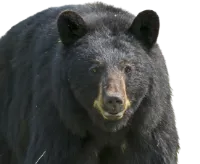
Black bears should be considered dangerous if you were approached by one. Although attacks from black bears are rarer than other bear species, they still happen. If you are to walk out into nature and go for a hike, where’s a risk of encountering black bears, there are some things to do to decrease the risk of an attack.
If you spot a bear on the side of a road, consider keeping moving and don’t stop. If you are going on foot, walk in the opposite direction, but keep an eye on the bear. Do not run. If the bear walks towards you, act boldly and shout, yell, and throw stuff at it. Hopefully, the bear will get intimidated and flee.
There are some ways to help black bears, and I’ll give my best advice below.
Be bear aware when hiking.
Regardless if you are out hiking or camping, there are some things to be aware of and respect.
Bear-proof your campsite and keep it attractant-free. You can do this in four ways.
- Don’t leave food in your tent.
- Always close the tent flaps so bears can’t simply walk in.
- Hang your food pack from a tree, atleast 10 feet of the ground.
- Store your food in bear-proof containers. Check Amazon for some here.
- Clean your camping-site after you’ve used it.
Before you venture on a hike, think about what bears are doing and give them some room. Only use the official trails and leave the wildlife trails to the wildlife.
There may be some seasonal closures that need to be respected.
Help them help themselves.
Bears eat various foods, mostly plant-based (80%), and some insects and other small animals.
When I’m out hiking, I always bring a bottle of sugared water. (60% sugar, 40% water). If I see an anthill, I always add some drops around it so they can bring the sugar inside for the winter months. A healthy ant population can be a good meal for bears. If the bear wouldn’t notice the anthill, you’ve at least made the ants happy.
Another thing you can do for bears is to contribute to the already established growth of berries. Bears love berries, but there’s a lot of competition for them. Bears, birds, humans, and other species love berries, and the bushes run scarce. Why not plant some extra blueberry bushes in already established blueberry areas? It’s good to stack up since not all seeds germinate. Here’s a pack of 500 seeds. You can sprinkle some around existing blueberry plants but also grow some yourself.
How to help cougars in California
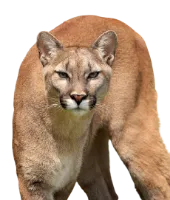
Cougars and other large cats in the mountain lion family are carnivores, and it’s hard to provide them with food without causing harm to another animal. However, there are other ways to help the cougars in California.
Almost 4000 mountain lions die every year due to trophy- and sport hunting. Rodenticides and vehicle strikes are also common reasons. That’s over ten mountain lions every single day.
You can help by speaking up about the situation to friends and family and raising awareness. There are also charities focused on mountain lions you can support.
The MLF (Mountain Lion Foundation) works to preserve the mountain lions in the US and needs help from volunteers and donations. There is no minimum gift required to join, and you can live in any state. Signup form here.
How to help coyotes in California
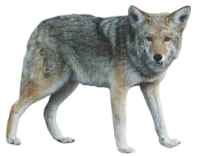
Coyotes are essential for biodiversity in our forests, and they help maintain a healthy ecosystem and species diversity. Coyotes regulate the number of mesocarnivores, like skunks, raccoons, and foxes. Which, in return, helps to boost biodiversity. (A mesocarnivore is someone who eats 50-70% meat, and the rest consists of non-vertebrate foods like insects, fungi, fruits, and other plant-based foods.
Coyotes are omnivores, meaning they eat a mix between meat and plants.
By keeping their food supply happy, you will ensure the coyotes are delighted. You can also be active in Project Coyote, which promotes coexistence with the coyotes and raises awareness.
How to help deers in California
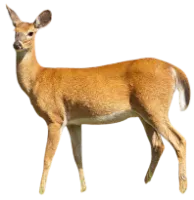
Few don’t appreciate the beauty of a deer. Regardless, while writing this, if it’s a fawn, buck, or doe, it’s a current decline in the deer population, and we will need to help them.
It’s against the law to feed deer, hang salt licks, use attractants, and similar in California. It’s better to let deers be. Since the deer population is declining to both the disease outbreak and hunting, the best way to help them is to help the professionals. Californians can help wildlife veterinarians by reporting sightings of sick or dead deer. If you encounter a deer that has died from unknown causes can submit a form to the CDFW. Here.
How to help dolphins in California

Almost everyone loves dolphins, and many of us were raised with Flipper running on the tv.
Despite being one of the most loved animals on the planet, they are still considered endangered, and their population is declining every year.
There are some things to do to help the dolphins in California. Here are seven things as a Californian you can do to help dolphins.
Boycott SeaWorld
Seaworld is the largest marine life park in the US. Although the largest Seaworld park is located in Texas, the Seaworld in California is pretty big. With over 4.3 million visitors every year, the San Diego park, with its over 200 acres, is among the top 10 most visited amusement parks in the US. Nearly 300 dolphins have died in the captivity of SeaWorld.
Speak with your friends and family and take chances to raise awareness about the issues with SeaWorld. If you are asked by a coworker where you plan your next vacation trip, you can reply, “Not SeaWorld for sure.”
Another “fun” way to raise awareness is to ask someone if they want to know a fact. 99% of them will, and it’s time to shine. My favorite is to compare the parking lot and the areas where the animals are kept. The red zone in the picture below is where the dolphins live their entire lives.

The dolphins and other animals spending their lives locked at Seaworld have nothing but concrete walls to stare at. Why don’t they add rocks, sand, aquatic plants, and other natural things for the animals to interact with? It’s too hard to keep the pools clean.
Wild dolphins swim 80 miles per day, playing, exploring, living their lives. But at Seaworld, they spend their days swimming in circles and to self-mutilation. SeaWorld is a prison where all prisoners are innocent, and these guys did nothing wrong except looking beautiful.
Beyond boycotting and raise awareness about Seaworld, you can contact them and ask them to change their ways. You can also sign up for PETA’s petition to urge SeaWorld to stop dolphin and orca breeding.
You can also watch the fantastic documentary Blackfish with some friends.
Clean the oceans
Dolphins and other animals living in the ocean can get entangled with waste. It’s essential to make sure everything is taken care of. Going zero waste, reusing your water bottle, and all stuff is excellent. However, not everyone does that. It’s therefore important to go one step beyond. Picking up their trash. Some people will never learn, and the quicker you understand that, the faster you will get going on your own and make a difference. Bring some bags, a pair of gloves, and head to the nearest beach and dedicate an hour. You will be shocked how much litter you will gather in that short amount of time. I recommend taking a before and after shot. That will grant you bragging rights on social media.
Some stores where you can rent kayaks sometimes give you a discount if you pick up trash floating around in the ocean. I know 101 Surf Sports in San Rafael had this a while back. You might want to send them a message and ask.
How to help hawks in California
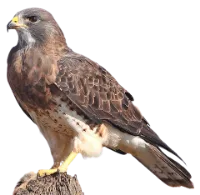
Hawks prefer live prey, and they can help with pests in your garden. If you would like to invite hawks to your garden, you may want to install a birdbath for them. Even carnivores need to take a bath to remove dirt from their feathers from time to time.
Californa wildlife center treats various types of injured animals, including hawks. They have a campaign called Have a Heart for Hawks, which will support their work. Link here.
How to help lizards in California

Even lizards can dehydrate in warm climates. If you are blessed with lizards in your garden, they might want to enjoy some water. Lizards don’t drink water, but instead, they absorb it in their skin. Put out some plates with water near or inside bushes where you usually spot lizards. Add some marbles so flying animals like bees can sit and also benefit the water.
If you want to attract lizards to your garden, there are some things you can do. For example, stop using pesticides, start mulching the garden, provide multiple hiding places like bushes and rock piles, a place for them to sunbathe like a rock, and a water source.
How to help otters in California

California’s southern sea otter has since 1977 been classified as threatened, and the status is still the same. Otters are important in the marine ecosystem, and sea otters eat urchins and other invertebrates that graze on giant kelp. Without sea otters, these animals can destroy kelp forests and remove the diversity of animals that depend on the kelp for their survival. Not only does kelp provide food for a lot of species, but it also protects coastlines from surges and absorbs carbon dioxide. Threats to sea otters are white shark attacks, diseases, oil spills, and human disturbances.
When you file your taxes, check for line 410 on Form 540. California Sea Otter Fund. Read more here.
How to help owls in California
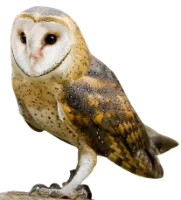
These magnificent birds play an essential role in the environment by controlling small animal populations. Owl’s primary prey are mammals which benefit humans greatly since it reduces the amount of food lost to rodents.
There are multiple ways we can help the owls. If you live in a house with a chimney you take care of, you can install a chimney cap. Otherwise, there’s a risk the owls will nest inside. If you have kids who play soccer or hockey, there’s a chance you have a goal in your garden. Owls can fly into nests and get stuck. Either remove the net when it isn’t used or lay the goal down so birds can’t accidentally fly into them. You can also donate and adopt an owl.
How to help raccoons in California

Raccoons like to live next to humans. Humans are excellent neighbors and provide them with a lot of food. Raccoons are especially important, not to feed, as with other wildlife. However, there are many ways how you can support raccoons instead of providing them food. Peta has a great resource explaining different ways to help the raccoons.
How to help skunks in California
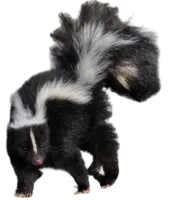
The best way to help skunks is to remove food scraps, and I assume you don’t want skunks in your garden or neighborhood. Skunk’s diet is determined by availability, and foods lying around will attract many different animals, including skunks. However, skunks can be your helpful gardener, and they can help you get rid of beetles, crickets, grubs, grasshoppers, mice, rats, and moles. Skunks are although omnivores, meaning they can also eat vegetables, fruits, and berries as well. However, skunks only tend to look for plant-based foods when the other food supply is scarce.
How to help snakes in California
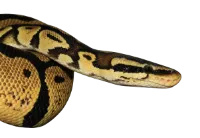
Snakes play a vital role in the ecosystem. They are pure carnivores and help regulate their prey’s population, but they can also themselves be prey for other predators. A lot of snakes die every year when they try to pass the road. Slow down, and be aware of wildlife on and near the road. Another thing to do to help snakes is to educate yourself. Educate yourself about the species in your area. Snakes have received a terrible reputation, primarily based on misinformation. Learn about how misunderstood snakes are and spread the information.
A third thing you can do for snakes is to provide them with water. Snakes and other animals need water, and why not place some plates with water in your garden.
How to help squirrels in California

It’s illegal to feed squirrels in California and can end up in a fine. However, there are other ways you can help squirrels living in your area besides feeding them. The first thing is to clean food scraps from outdoors. Squirrels eat almost anything, and especially leftovers from humans. You can start by making sure your garden doesn’t attract squirrels. However, if you have a birdfeeder, they might climb up to it or eat the fallen seeds. See if you can attach a squirrel protector to your birdfeeder. It’s shaped like a bowl that catches seeds but also protects it from climbers underneath.
The other thing you can do for squirrels is contacting the California wildlife center and ask if they need any volunteers. If you are handy, they might ask you to build some squirrel boxes for them.
How to help whales in California

Whales are extremely important for the environment, and they provide you with at least half of the oxygen you breathe. The way whales eat, poo, migrate, and dive helps the oceans tremendously. They eat smaller fish, poop them out, and provide the ocean with nutrients.
There are a lot of people dedicated to help and save the whales, and the list of things you can do to help the whales can be very long. SaveTheWhales.org has a great resource of different ways you can help the whales.
